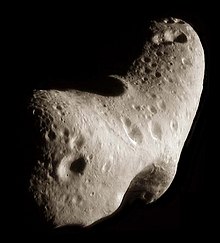
C-typeasteroids are the most common variety, forming around 75% of known asteroids. They are volatile-rich and distinguished by a very low albedo because their composition includes a large amount of carbon, in addition to rocks and minerals. They have an average density of about 1.7 g/cm3.
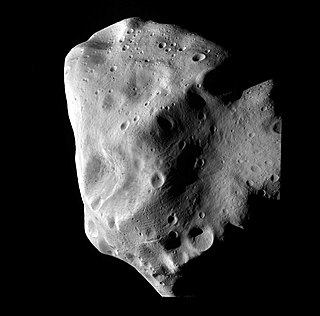
M-type asteroids are a spectral class of asteroids which appear to contain higher concentrations of metal phases than other asteroid classes, and are widely thought to be the source of iron meteorites.
P-type asteroids are asteroids that have low albedo and a featureless reddish spectrum. It has been suggested that they have a composition of organic rich silicates, carbon and anhydrous silicates, possibly with water ice in their interior. P-type asteroids are found in the outer asteroid belt and beyond. There are in the neighborhood of 33 known P-type asteroids, depending on the classification, including 46 Hestia, 65 Cybele, 76 Freia, 87 Sylvia, 153 Hilda, 476 Hedwig and, in some classifications, 107 Camilla.
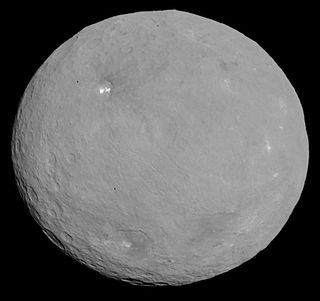
G-type asteroids are a relatively uncommon type of carbonaceous asteroid that makes up approximately 5% of asteroids. The most notable asteroid in this class is 1 Ceres.

B-type asteroids are a relatively uncommon type of carbonaceous asteroid, falling into the wider C-group; the 'B' indicates these objects are spectrally blue. In the asteroid population, B-class objects can be found in the outer asteroid belt, and also dominate the high-inclination Pallas family which includes the third-largest asteroid 2 Pallas. They are thought to be primitive, volatile-rich remnants from the early Solar System. There are 65 known B-type asteroids in the SMASS classification, and 9 in the Tholen classification as of March 2015.
F-type asteroids are a relatively uncommon type of carbonaceous asteroid, falling into the wider C-group.

Lutetia is a large M-type asteroid in the main asteroid belt. It measures about 100 kilometers in diameter. It was discovered in 1852 by Hermann Goldschmidt, and is named after Lutetia, the Latin name of Paris.

2685 Masursky, provisional designation 1981 JN, is a stony Eunomian asteroid from the central regions of the asteroid belt, approximately 11 kilometers in diameter. It was discovered on 3 May 1981, by American astronomer Edward Bowell at the Anderson Mesa Station near Flagstaff, Arizona, and named after American planetary geologist Harold Masursky. In January 2000, the Cassini space probe observed the S-type asteroid from afar during its coast to Saturn.
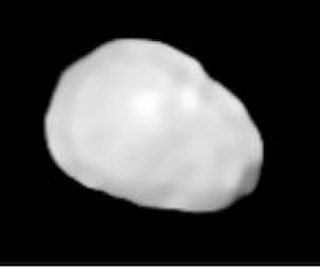
Eunomia is a very large asteroid in the middle asteroid belt. It is the largest of the stony (S-type) asteroids, with 3 Juno as a close second. It is quite a massive asteroid, in 6th to 8th place. It is the largest Eunomian asteroid, and is estimated to contain 1% of the mass of the asteroid belt.
The Eunomia or Eunomian family is a large asteroid family of S-type asteroids named after the asteroid 15 Eunomia. It is the most prominent family in the intermediate asteroid belt and the 6th-largest family with nearly six thousand known members, or approximately 1.4% of all asteroids in the asteroid belt.

An asteroid spectral type is assigned to asteroids based on their reflectance spectrum, color, and sometimes albedo. These types are thought to correspond to an asteroid's surface composition. For small bodies that are not internally differentiated, the surface and internal compositions are presumably similar, while large bodies such as Ceres and Vesta are known to have internal structure. Over the years, there has been a number of surveys that resulted in a set of different taxonomic systems such as the Tholen, SMASS and Bus–DeMeo classifications.
The X-group of asteroids collects together several types with similar spectra, but probably quite different compositions.
1106 Cydonia, provisional designation 1929 CW, is a Eunomian asteroid from the central regions of the asteroid belt, approximately 13 kilometers in diameter. It was discovered on 5 February 1929, by astronomer Karl Reinmuth at the Heidelberg-Königstuhl State Observatory in Germany. The asteroid was named for the fruit-bearing tree Cydonia (quince). The S-type asteroid has a relatively short rotation period of 2.7 hours.
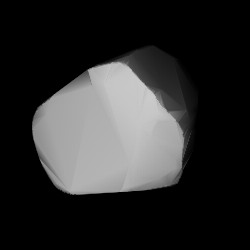
5196 Bustelli is a stony Eunomia asteroid from the central regions of the asteroid belt, approximately 6 kilometers kilometers in diameter. It was discovered on 30 September 1973, by Dutch astronomers Ingrid and Cornelis van Houten at Leiden, and Tom Gehrels the Palomar Observatory. The S-type asteroid was named after Italian-Swiss artist Franz Anton Bustelli.
3137 Horky, provisional designation 1982 SM1, is a background asteroid from the inner regions of the asteroid belt, approximately 7 kilometers (4.3 miles) in diameter. It was discovered on 16 September 1982, by Czech astronomer Antonín Mrkos at the Kleť Observatory in the Czech Republic. The likely stony asteroid was named for a hill near the Czech village of Horky.
1384 Kniertje, provisional designation 1934 RX, is a dark Adeonian asteroid from the central regions of the asteroid belt, approximately 26 kilometers in diameter. It was discovered on 9 September 1934, by Dutch astronomer Hendrik van Gent at the Union Observatory in Johannesburg, South Africa. The asteroid was named after a character in the Dutch play Op Hoop van Zegen by Herman Heijermans.
1392 Pierre, provisional designation 1936 FO, is a dark, dynamical Eunomian asteroid from the central regions of the asteroid belt, approximately 26 kilometers (16 mi) in diameter. It was discovered on 16 March 1936, by astronomer Louis Boyer at the Algiers Observatory in Algeria, North Africa. The asteroid was named after the discoverer's nephew, Pierre.
1238 Predappia, provisional designation 1932 CA, is a dark Adeonian asteroid from the central regions of the asteroid belt, approximately 21 kilometers in diameter. It was discovered on 4 February 1932, by astronomer Luigi Volta at the Observatory of Turin in Pino Torinese, Italy. It was later named after the Italian village of Predappio.
5855 Yukitsuna, provisional designation 1992 UO2, is a stony Marian asteroid from the central regions of the asteroid belt, approximately 11 kilometers (7 miles) in diameter. It was discovered on 26 October 1992, by Japanese astronomers Akira Natori and Takeshi Urata at the JCPM Yakiimo Station. The likely elongated S-type asteroid has a rotation period of 19 hours. It was named for Minamoto no Yukitsuna, a Japanese general during the Heian era.
2672 Písek, provisional designation 1979 KC, is a Eunomia asteroid from the central regions of the asteroid belt, approximately 25 kilometers in diameter. It was discovered on 31 May 1979, by Yugoslav astronomer Jaroslav Květoň at the Kleť Observatory in the Czech Republic. The likely elongated asteroid is a suspected tumbler and a slow rotator with an exceptionally long period of 831 hours. It was named after the Czech town of Písek.
